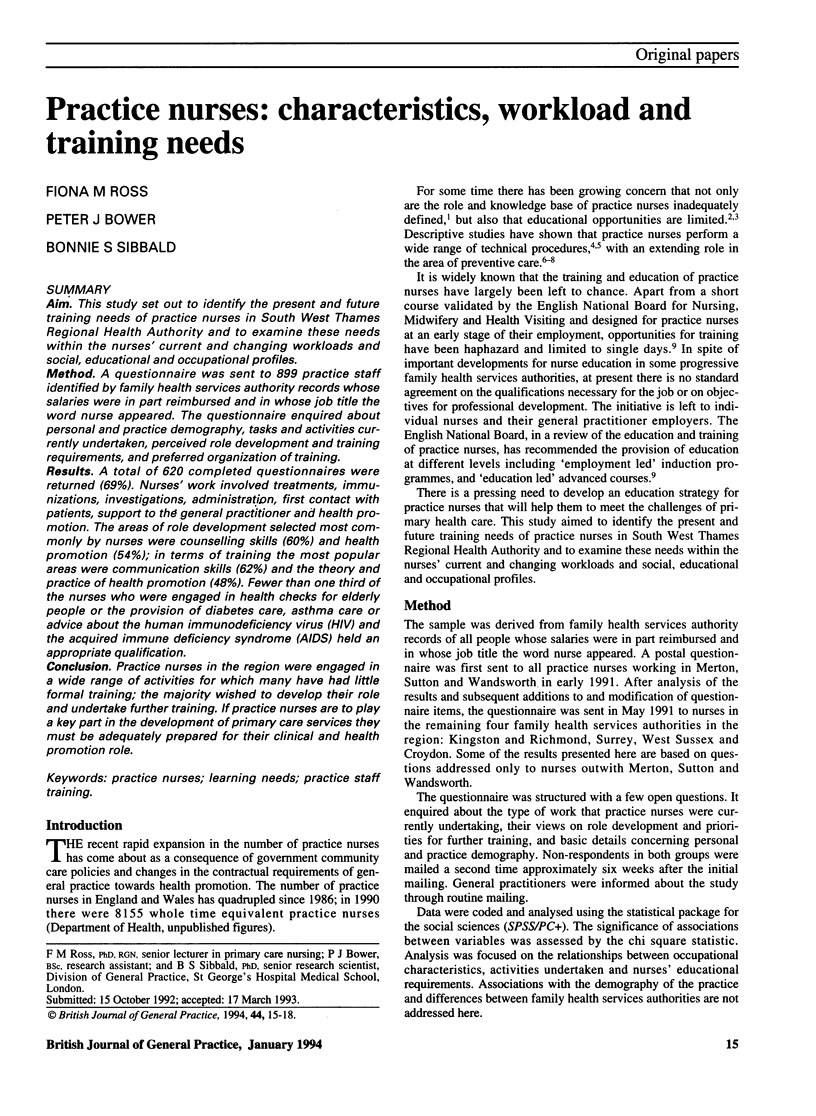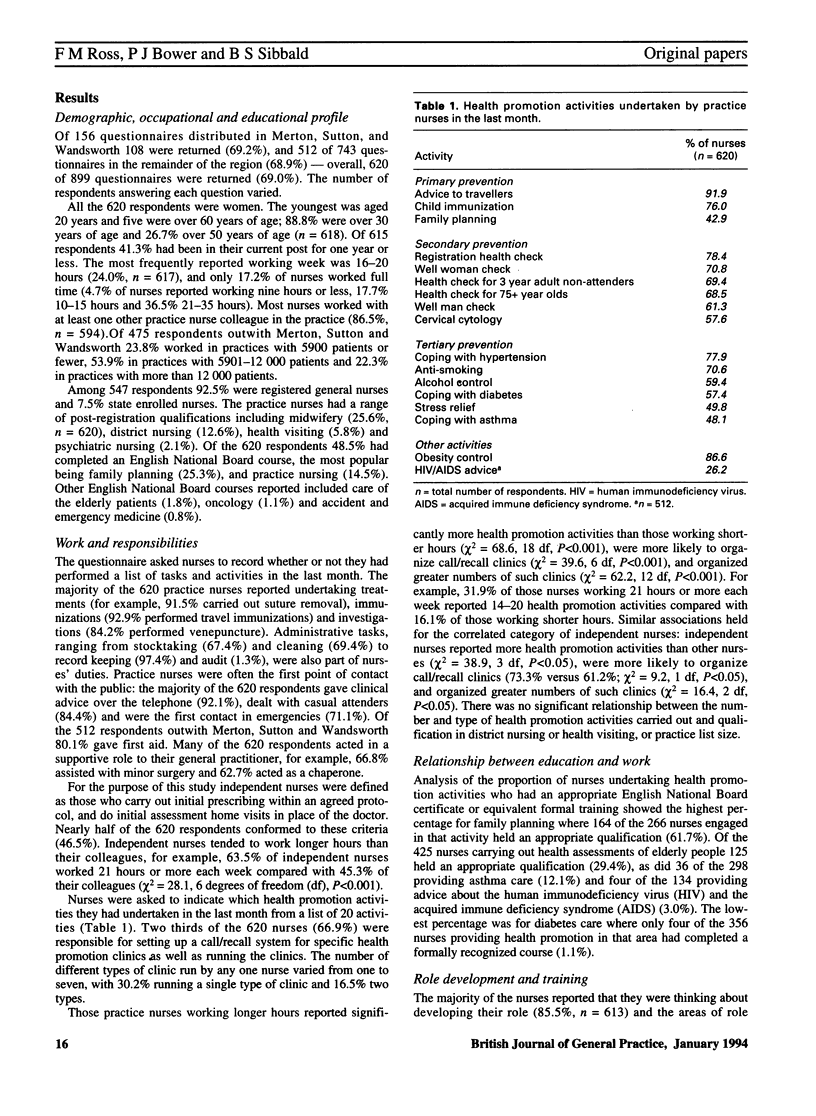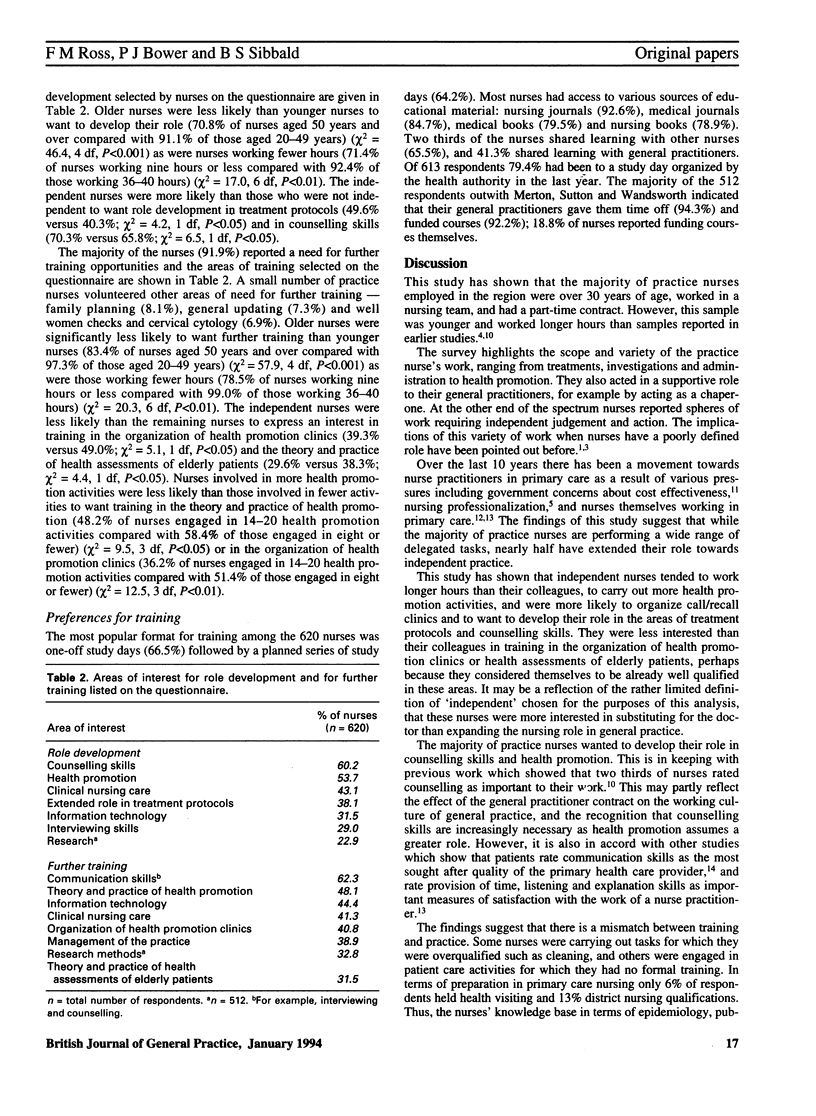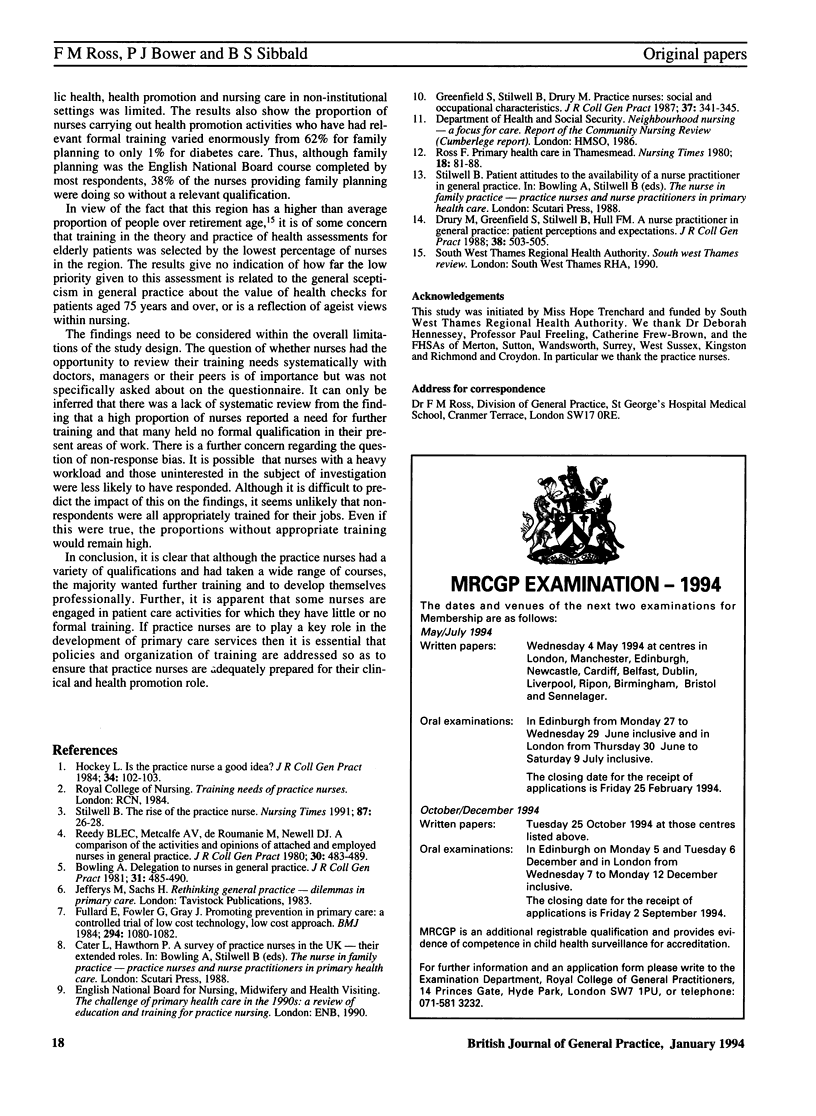Abstract
AIM. This study set out to identify the present and future training needs of practice nurses in South West Thames Regional Health Authority and to examine these needs within the nurses' current and changing workloads and social, educational and occupational profiles. METHOD. A questionnaire was sent to 899 practice staff identified by family health services authority records whose salaries were in part reimbursed and in whose job title the word nurse appeared. The questionnaire enquired about personal and practice demography, tasks and activities currently undertaken, perceived role development and training requirements, and preferred organization of training. RESULTS. A total of 620 completed questionnaires were returned (69%). Nurses' work involved treatments, immunizations investigations, administration, first contact with patients, support to the general practitioner and health promotion. The areas of role development selected most commonly by nurses were counselling skills (60%) and health promotion (54%); in terms of training the most popular areas were communication skills (62%) and the theory and practice of health promotion (48%). Fewer than one third of the nurses who were engaged in health checks for elderly people or the provision of diabetes care, asthma care or advice about the human immunodeficiency virus (HIV) and the acquired immune deficiency syndrome (AIDS) held an appropriate qualification. CONCLUSION. Practice nurses in the region were engaged in a wide range of activities for which many have had little formal training; the majority wished to develop their role and undertake further training. If practice nurses are to play a key part in the development of primary care services they must be adequately prepared for their clinical and health promotion role.
Full text
PDF



Selected References
These references are in PubMed. This may not be the complete list of references from this article.
- Bowling A. Delegation to nurses in general practice. J R Coll Gen Pract. 1981 Aug;31(229):485–490. [PMC free article] [PubMed] [Google Scholar]
- Drury M., Greenfield S., Stilwell B., Hull F. M. A nurse practitioner in general practice: patient perceptions and expectations. J R Coll Gen Pract. 1988 Nov;38(316):503–505. [PMC free article] [PubMed] [Google Scholar]
- Fullard E., Fowler G., Gray M. Promoting prevention in primary care: controlled trial of low technology, low cost approach. Br Med J (Clin Res Ed) 1987 Apr 25;294(6579):1080–1082. doi: 10.1136/bmj.294.6579.1080. [DOI] [PMC free article] [PubMed] [Google Scholar]
- Greenfield S., Stilwell B., Drury M. Practice nurses: social and occupational characteristics. J R Coll Gen Pract. 1987 Aug;37(301):341–345. [PMC free article] [PubMed] [Google Scholar]
- Hockey L. Is the practice nurse a good idea? J R Coll Gen Pract. 1984 Feb;34(259):102–103. [PMC free article] [PubMed] [Google Scholar]
- Reedy B. L., Metcalfe A. V., de Roumanie M., Newell D. J. A comparison of the activities and opinions of attached and employed nurses in general practice. J R Coll Gen Pract. 1980 Aug;30(217):483–489. [PMC free article] [PubMed] [Google Scholar]
- Ross F. Primary health care in Thamesmead - 1. Nurs Times. 1980 Jul 24;76(30):suppl 76–84. [PubMed] [Google Scholar]
- Stilwell B. The rise of the practice nurse. Nurs Times. 1991 Jun 12;87(24):26–28. [PubMed] [Google Scholar]


